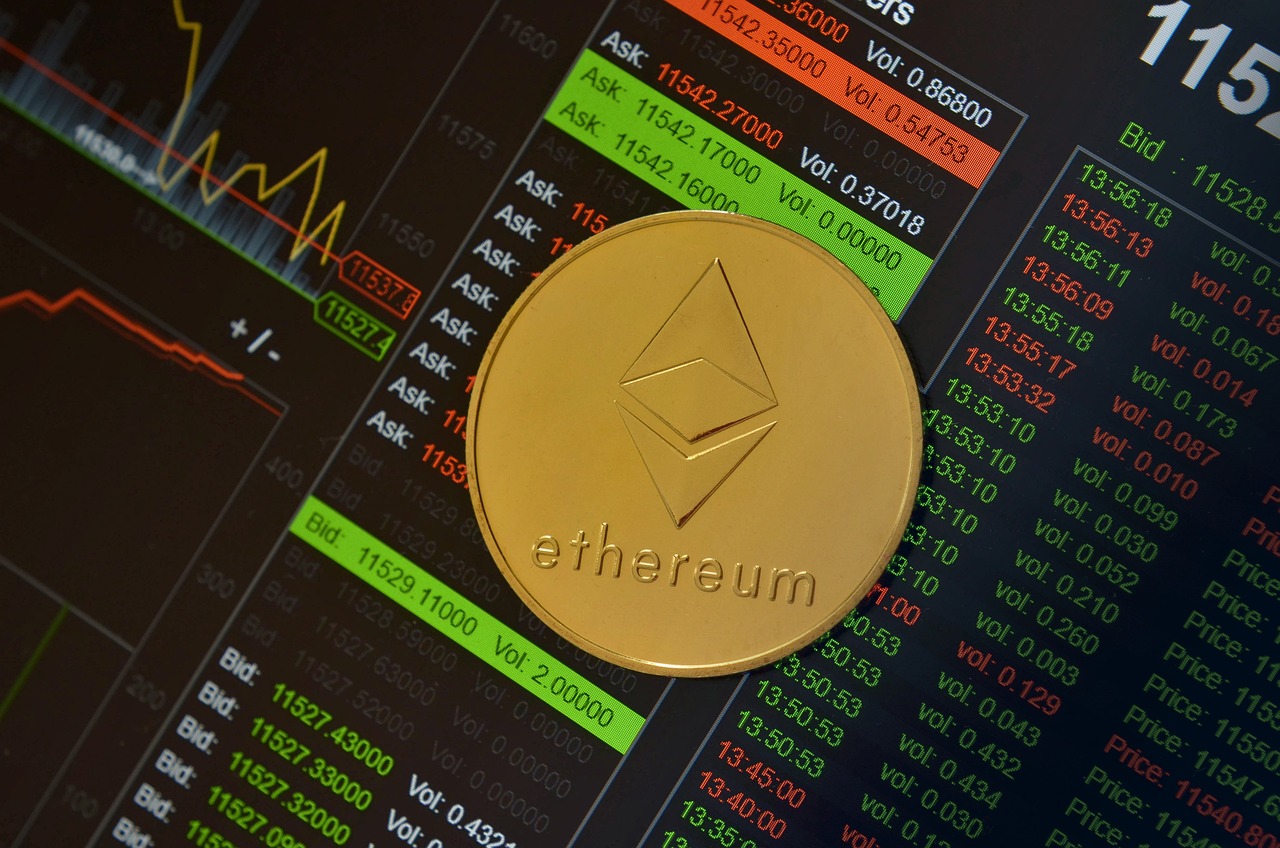The Role of Decentralized Finance in Financial Inclusion
In recent years, the financial landscape has witnessed a seismic shift, largely driven by the advent of Decentralized Finance (DeFi). But what exactly does this mean for the countless individuals who have historically been left out of the financial system? This article delves into how DeFi can act as a powerful catalyst for financial inclusion, bridging gaps and providing opportunities for underserved populations around the globe. Imagine a world where anyone, regardless of their background or location, can access essential financial services with just a smartphone and an internet connection. Sounds revolutionary, right? Well, that’s precisely the promise of DeFi.
At its core, Decentralized Finance represents a shift from traditional financial systems to a more open and inclusive framework. Built on blockchain technology, DeFi eliminates the need for intermediaries such as banks and financial institutions, allowing individuals to engage directly with financial services. This transformation is akin to moving from a crowded, bureaucratic bank branch to a streamlined digital marketplace where transactions occur seamlessly and transparently.
In contrast to traditional finance, which often requires extensive documentation and can impose significant barriers to entry, DeFi platforms are designed to be accessible to anyone with an internet connection. This democratization of finance is not just a trend; it's a fundamental change in how we think about money, lending, and investment.
The benefits of DeFi are manifold, particularly when it comes to enhancing financial inclusion for marginalized communities. Let's explore some of the most significant advantages:
One of the most compelling features of DeFi is its ability to drastically reduce transaction fees. Traditional banking systems often impose hefty charges for services such as wire transfers or currency conversions, which can be particularly burdensome for low-income individuals. In contrast, DeFi platforms leverage smart contracts to facilitate transactions at a fraction of the cost. This reduction in fees can empower individuals who previously faced high banking costs, allowing them to save more and invest in their futures.
Consider the impact of DeFi on remittances, where families rely on money sent from abroad to meet their daily needs. Traditional remittance services can charge fees upwards of 7-10%, which can significantly diminish the amount received. With DeFi, these costs can be reduced to less than 1%, ensuring that families receive more of the money they depend on. This shift not only enhances the financial stability of these households but also fosters greater economic participation.
Another advantage of DeFi is its unparalleled accessibility. Anyone with an internet connection can access DeFi platforms, which means that individuals in remote or underserved areas can finally participate in the financial system. This is a game changer for those who have been excluded from traditional banking due to geographical barriers or lack of identification. With DeFi, the world is their oyster, and they can engage with a variety of financial products, from lending to investing.
DeFi is built on blockchain technology, which provides a transparent and secure environment for financial transactions. This transparency fosters trust among users, as they can verify transactions and understand how their money is being used. Moreover, the decentralized nature of DeFi means that there is no single point of failure, making it more resilient to fraud and corruption. In a world where financial institutions have often been marred by scandals, DeFi offers a refreshing alternative that prioritizes user security and trust.
While the potential of DeFi is immense, it is not without its challenges. Regulatory uncertainty, security risks, and technological barriers pose significant obstacles that need addressing. As we venture further into this new financial era, it's crucial to navigate these challenges to ensure that the benefits of DeFi can be fully realized for everyone.
The evolving regulatory landscape presents a complex challenge for DeFi. Governments are grappling with how to regulate these new systems without stifling innovation. The potential impact of regulations could either pave the way for safer, more robust DeFi platforms or hinder user participation due to excessive restrictions. It's a fine balance that needs careful consideration.
Despite the inherent security features of blockchain, DeFi platforms are still susceptible to hacks and vulnerabilities. Users must remain vigilant and take proactive measures to protect their assets. Understanding the risks involved and employing best practices can help mitigate these challenges, but it’s an ongoing concern that requires attention from both developers and users alike.
Looking ahead, the integration of DeFi into mainstream finance holds the promise of reshaping financial inclusion on a global scale. As more individuals gain access to decentralized platforms, we could witness a significant shift in how financial services are delivered and consumed. The implications for underserved populations are profound, as DeFi has the potential to create a more equitable financial system where everyone has the opportunity to thrive.
- What is Decentralized Finance (DeFi)? DeFi refers to financial services built on blockchain technology that operate without intermediaries.
- How does DeFi enhance financial inclusion? By reducing costs, increasing accessibility, and providing transparency, DeFi allows marginalized communities to access financial services.
- What are the risks associated with DeFi? DeFi faces challenges such as regulatory uncertainty and security risks, which users need to be aware of.
- What is the future of DeFi? The future of DeFi looks promising, with the potential to reshape financial inclusion and create a more equitable financial system.

Understanding Decentralized Finance
Decentralized finance, commonly referred to as DeFi, is revolutionizing the world of finance by introducing an innovative framework that operates on blockchain technology. Unlike traditional finance, which relies heavily on centralized institutions like banks and brokers, DeFi eliminates the need for intermediaries, allowing individuals to interact directly with financial services. This paradigm shift not only democratizes access to financial resources but also enhances the overall efficiency of transactions.
At its core, DeFi is built on a series of smart contracts—self-executing contracts with the terms of the agreement directly written into code. These smart contracts run on decentralized networks, primarily Ethereum, enabling users to engage in various financial activities such as lending, borrowing, trading, and earning interest on their assets without the oversight of a central authority. This is akin to having a financial ecosystem where everyone can participate without gatekeepers, thus fostering a sense of community and shared responsibility.
One of the most fascinating aspects of DeFi is its accessibility. Anyone with an internet connection can access DeFi platforms, which means that individuals in underserved or underbanked regions can finally partake in financial activities that were once out of reach. Think of it as opening the doors to a vast marketplace where people can trade, invest, and save—all from the comfort of their homes. This level of accessibility is a game-changer, especially for those who have been marginalized by traditional banking systems.
However, it's essential to recognize that DeFi is not without its challenges. The technology is still in its infancy, and while the principles are sound, the execution can sometimes be flawed. Issues such as scalability, user experience, and security vulnerabilities pose risks that need addressing. Nevertheless, the potential benefits of DeFi far outweigh the drawbacks, especially when it comes to promoting financial inclusion.
To further illustrate the differences between DeFi and traditional finance, consider the following table:
| Aspect | Traditional Finance | Decentralized Finance (DeFi) |
|---|---|---|
| Intermediaries | Banks, brokers, and financial institutions | No intermediaries; peer-to-peer interactions |
| Accessibility | Limited to those with bank accounts | Accessible to anyone with internet access |
| Transaction Speed | Can take days due to processing times | Instantaneous transactions through smart contracts |
| Transparency | Opaque processes; limited information | Fully transparent; all transactions are recorded on the blockchain |
| Fees | High fees for transactions and services | Lower fees due to reduced overhead costs |
In summary, understanding decentralized finance is crucial for recognizing its potential to reshape our financial landscape. By eliminating barriers and promoting direct interactions, DeFi not only enhances efficiency but also paves the way for a more inclusive financial future. As we delve deeper into the benefits of DeFi, it becomes evident that this innovative approach has the power to uplift communities and empower individuals around the globe.
- What is DeFi? DeFi stands for decentralized finance, which refers to financial services built on blockchain technology that operate without intermediaries.
- How does DeFi promote financial inclusion? By providing accessible financial services to anyone with an internet connection, DeFi breaks down barriers that have traditionally excluded underbanked populations.
- What are smart contracts? Smart contracts are self-executing contracts with the terms directly written into code, allowing for automated transactions on the blockchain.
- What are the risks associated with DeFi? Some risks include security vulnerabilities, regulatory uncertainty, and potential scalability issues.

Benefits of DeFi for Financial Inclusion
Decentralized Finance, or DeFi, is not just a buzzword; it represents a revolutionary shift in how we think about finance and accessibility. Imagine a world where anyone, regardless of their background or location, can access financial services with just a smartphone and an internet connection. This is the vision that DeFi brings to life, and it's a game-changer for financial inclusion. By eliminating intermediaries like banks and brokers, DeFi reduces costs and opens doors for marginalized communities that have traditionally been excluded from the financial system.
One of the standout features of DeFi is its ability to provide lower transaction costs. In traditional finance, high fees can be a significant barrier for individuals, especially those sending money across borders or making small transactions. DeFi platforms leverage blockchain technology to minimize these costs, allowing users to send money with minimal fees. This is especially beneficial for individuals in developing countries, where every penny counts. For instance, consider a family living in a rural area that relies on remittances from a relative working abroad. With DeFi, they can receive funds with little to no fees, ensuring that more of that money reaches their pockets.
Moreover, the accessibility of DeFi platforms is a transformative aspect of this financial revolution. Unlike traditional banks that require extensive documentation and credit histories, DeFi platforms often allow users to create accounts with just an email address and a wallet. This opens the floodgates for individuals who might not have the necessary paperwork or who live in areas with limited banking infrastructure. Imagine a farmer in a remote village who can now access loans, insurance, and investment opportunities without having to travel miles to the nearest bank. This kind of access is not just a luxury; it’s a lifeline.
Additionally, DeFi promotes enhanced transparency and security. Every transaction on a blockchain is recorded and can be viewed by anyone, which means that users can trust the system without relying on a central authority. This transparency helps to build trust, especially among communities that have been wary of financial institutions due to past experiences. Furthermore, the security features inherent in blockchain technology, such as cryptographic protections, add an extra layer of safety for users. While no system is entirely foolproof, the decentralized nature of DeFi means that there is no single point of failure, making it harder for malicious actors to exploit the system.
In summary, the benefits of DeFi for financial inclusion are vast and varied. By offering lower costs, greater accessibility, and enhanced transparency, DeFi not only empowers individuals but also fosters economic growth in underserved communities. As we look to the future, the potential of DeFi to bridge the financial gap for millions of people around the world is not just hopeful; it’s achievable. The question remains: how quickly can we adapt to this new financial landscape, and will we seize this opportunity to create a more inclusive financial system for all?
- What is Decentralized Finance (DeFi)?
DeFi refers to a financial system built on blockchain technology that allows for peer-to-peer transactions without intermediaries like banks. - How does DeFi promote financial inclusion?
DeFi reduces transaction costs, increases accessibility to financial services, and enhances transparency, making it easier for underserved populations to participate in the financial system. - What are the risks associated with DeFi?
DeFi does come with risks, including regulatory uncertainties, security vulnerabilities, and potential technological barriers that users must navigate. - Can anyone use DeFi services?
Yes, as long as you have an internet connection and a compatible device, you can access DeFi services without needing a bank account or extensive documentation.

Lower Transaction Costs
One of the primary advantages of decentralized finance (DeFi) is its ability to significantly reduce transaction costs. In traditional finance, individuals often find themselves burdened by high fees for various services, including bank transfers, currency exchanges, and even account maintenance. These fees can be a barrier to entry for many, especially those from marginalized communities who may already be struggling financially. In contrast, DeFi operates on blockchain technology, which allows for peer-to-peer transactions without the need for intermediaries, thus slashing costs dramatically.
Imagine a world where sending money across borders doesn't come with the hefty fees that banks and money transfer services impose. With DeFi, this vision is becoming a reality. For instance, the cost of transferring funds can be reduced to a fraction of what it would typically be, allowing individuals to keep more of their hard-earned money. To illustrate this, consider the following table that compares traditional remittance costs with those of DeFi platforms:
| Service Type | Traditional Finance Cost (%) | DeFi Cost (%) |
|---|---|---|
| Bank Transfer | 5-10% | 1-3% |
| Money Transfer Service | 7-12% | 0.5-2% |
| Currency Exchange | 3-5% | 0.1-1% |
As you can see, the potential savings with DeFi are substantial. This reduction in costs can empower individuals, especially those in developing countries, to engage in financial activities that were previously out of reach. For example, families relying on remittances from abroad can benefit immensely from lower costs, allowing them to receive more money and support their local economies. This not only helps families thrive but also fosters a sense of community and connection, as more resources are circulated within local markets.
Moreover, the transparency associated with DeFi platforms means that users can easily see the fees they are being charged, which fosters trust and encourages more people to participate in the financial system. In traditional finance, hidden fees and complex structures can often leave individuals feeling confused and exploited. DeFi aims to eliminate these issues, creating a more equitable financial landscape where everyone has access to affordable services.
In summary, lower transaction costs are a game-changer for financial inclusion. By removing the barriers imposed by traditional financial systems, DeFi opens up a world of possibilities for individuals who have been historically underserved. As this technology continues to evolve and gain traction, it holds the promise of creating a more inclusive financial ecosystem that benefits everyone.

Impact on Remittances
The world of remittances has long been plagued by high fees and slow transaction times, creating a significant burden for families relying on these funds to make ends meet. Decentralized Finance (DeFi) is stepping in to change that narrative, offering a revolutionary approach that not only reduces costs but also speeds up the process. Imagine sending money to a loved one in another country with just a few clicks, and without the hefty fees that traditional banks and money transfer services impose. With DeFi, this is becoming a reality.
One of the most striking features of DeFi platforms is their ability to facilitate cross-border transactions at a fraction of the cost. Traditional remittance services can charge anywhere from 5% to 10% in fees. In contrast, DeFi platforms often reduce these fees to less than 1%. This is a game-changer for individuals who send money home to support their families. For instance, if a migrant worker sends $1,000 home, they could save up to $100 in fees using traditional methods. With DeFi, that same transaction could cost them as little as $10, allowing them to send more money to their families.
Furthermore, the speed of transactions is another critical advantage. Traditional remittance services can take several days to process a transaction, especially when dealing with different currencies and banking systems. DeFi, powered by blockchain technology, can facilitate transactions in real-time. This means that funds can be available to recipients almost instantly, allowing families to access their money when they need it the most.
To illustrate the impact of DeFi on remittances, consider the following table:
| Service Type | Average Fees (%) | Transaction Time |
|---|---|---|
| Traditional Remittance Service | 5% - 10% | 1-5 days |
| DeFi Platform | Less than 1% | Instant |
This table clearly shows the stark contrast between traditional remittance services and DeFi platforms. The implications for families relying on these funds are profound. With lower costs and faster transactions, families can plan better, invest in education, healthcare, and other essential needs without the stress of waiting for funds to arrive or losing a significant portion of their money to fees.
Moreover, DeFi platforms are accessible to anyone with an internet connection, which is particularly beneficial for those living in remote areas where traditional banking services are scarce. This increased accessibility allows more people to participate in the financial system, breaking down barriers that have historically excluded many from accessing essential financial services.
In conclusion, the impact of DeFi on remittances is transformative. By reducing costs and speeding up transactions, decentralized finance is not just providing a service; it is enhancing the quality of life for countless individuals and families around the world. As we move forward, it is crucial for stakeholders to recognize and harness the potential of DeFi to create a more inclusive financial ecosystem.
- What is decentralized finance (DeFi)? DeFi refers to financial services built on blockchain technology, which eliminates the need for intermediaries.
- How does DeFi reduce remittance costs? DeFi platforms typically charge lower fees than traditional services, allowing more money to reach recipients.
- Are DeFi transactions secure? While DeFi offers enhanced security through blockchain technology, users should still be cautious of potential risks and vulnerabilities.
- Can anyone use DeFi platforms? Yes, anyone with an internet connection can access DeFi platforms, making financial services more inclusive.

Accessibility to Financial Services
In a world where traditional banking systems often leave many individuals stranded, decentralized finance (DeFi) emerges as a beacon of hope. Imagine a scenario where anyone with an internet connection can access financial services without the need for intermediaries like banks. This is not just a dream; it's the reality that DeFi is creating. By leveraging blockchain technology, DeFi platforms are breaking down the barriers that have historically prevented marginalized communities from participating in the financial ecosystem.
One of the most compelling aspects of DeFi is its universal accessibility. Unlike traditional banks that often require extensive documentation, proof of income, and a good credit score, DeFi platforms typically require only a digital wallet and internet access. This means that individuals in remote areas, or those without formal identification, can engage in financial activities such as lending, borrowing, and trading. The implications are profound:
- Empowerment of the Unbanked: Over 1.7 billion people worldwide are unbanked, lacking access to basic financial services. DeFi offers them a pathway to financial inclusion.
- Global Participation: DeFi allows users from different geographical locations to participate in global markets without the constraints of local banking systems.
- Lower Barriers to Entry: With minimal requirements, even those with limited financial literacy can start engaging with financial products.
Furthermore, the 24/7 availability of DeFi services means that users can manage their finances at their convenience, without being tied to the operating hours of traditional banks. This flexibility can be particularly beneficial for people who work irregular hours or live in different time zones. Additionally, the transparent nature of DeFi protocols allows users to understand the rules and fees associated with their transactions, fostering a sense of trust and security.
However, while the accessibility of DeFi is revolutionary, it is essential to recognize the challenges that still exist. Not everyone has the technical knowledge or resources to navigate the complexities of blockchain technology. This gap could potentially widen the divide between those who can benefit from DeFi and those who cannot. Therefore, as we move forward, it is crucial for the DeFi community to prioritize education and outreach to ensure that everyone can harness the power of decentralized finance.
In summary, the accessibility of financial services through DeFi represents a significant leap towards inclusivity. By removing traditional barriers and democratizing access to financial tools, DeFi is paving the way for a more equitable financial landscape. As we continue to explore this innovative space, the potential for positive change is immense, especially for those who have been historically marginalized.
- What is decentralized finance (DeFi)? DeFi refers to financial services built on blockchain technology that operate without intermediaries.
- How does DeFi improve financial inclusion? DeFi lowers barriers to access financial services, allowing anyone with internet access to participate.
- What are the risks associated with DeFi? Risks include regulatory uncertainty, security vulnerabilities, and a lack of user education.
- Can anyone use DeFi platforms? Yes, as long as they have internet access and a digital wallet, anyone can use DeFi platforms.

Enhanced Transparency and Security
When it comes to finance, trust is everything. Imagine handing over your hard-earned money to a stranger—sounds risky, right? This is where decentralized finance (DeFi) shines brightly. Built on the robust foundation of blockchain technology, DeFi platforms offer a level of transparency and security that traditional financial systems often struggle to match. Each transaction is recorded on a public ledger, allowing anyone to verify its authenticity. This transparency not only builds trust among users but also deters fraudulent activities, making it a safer option for managing finances.
In traditional finance, you often have to rely on intermediaries, such as banks or financial institutions, to handle your transactions. These intermediaries can introduce delays, additional fees, and even the possibility of human error. With DeFi, however, smart contracts automate the entire process, ensuring that transactions are executed exactly as intended without the need for third-party oversight. This shift not only enhances efficiency but also reduces the potential for fraud, as the code behind smart contracts is open for scrutiny.
Moreover, the security features inherent in blockchain technology provide users with a sense of safety. Each transaction is encrypted and linked to the previous one, making it nearly impossible to alter past records without detection. This creates a secure environment where users can confidently engage in financial activities without the fear of their assets being compromised. However, it’s crucial to note that while DeFi platforms are generally secure, they are not immune to risks. Users must remain vigilant and educate themselves on best practices for protecting their assets.
To further illustrate the importance of transparency and security in DeFi, consider the following key points:
- Public Ledger: All transactions are recorded on a public blockchain, enabling anyone to audit and verify.
- Smart Contracts: These self-executing contracts ensure that transactions are carried out as programmed, without human intervention.
- Encryption: Transactions are secured through advanced cryptographic techniques, safeguarding user data and assets.
In summary, the enhanced transparency and security offered by DeFi not only empower individuals to take control of their financial futures but also pave the way for greater financial inclusion. By eliminating the need for intermediaries and providing a secure environment, DeFi is helping to democratize access to financial services for everyone, regardless of their background or location.
- What is DeFi? Decentralized Finance (DeFi) refers to financial services built on blockchain technology that operate without intermediaries, allowing users to lend, borrow, trade, and earn interest on their assets directly.
- How does DeFi ensure security? DeFi platforms use blockchain technology, smart contracts, and encryption to secure transactions and protect user data, although users should still practice caution.
- Can anyone access DeFi services? Yes, anyone with an internet connection can access DeFi platforms, making financial services more inclusive for marginalized communities.

Challenges Facing DeFi
While decentralized finance (DeFi) holds immense promise for enhancing financial inclusion, it is not without its challenges. These obstacles can hinder the growth and adoption of DeFi technologies, particularly among underserved populations. One of the most pressing issues is the regulatory uncertainty surrounding DeFi platforms. As governments and regulatory bodies scramble to keep pace with the rapid evolution of blockchain technology, they often struggle to create a framework that balances innovation with consumer protection. This uncertainty can deter potential users who may fear legal repercussions or lack of recourse in the event of fraud.
Additionally, security risks pose a significant threat to the integrity of DeFi platforms. The decentralized nature of these systems means that they are often more vulnerable to hacks and exploits compared to traditional financial institutions. In fact, numerous high-profile incidents have demonstrated how easily funds can be siphoned away from DeFi protocols. For instance, according to a recent report, over $1 billion was stolen from DeFi projects in 2021 alone. This alarming trend raises questions about the safety of funds and the overall trustworthiness of decentralized finance.
Technological barriers also play a critical role in limiting access to DeFi services. While the internet has democratized access to information, not everyone has the necessary skills or resources to navigate complex blockchain systems. Many potential users may find the technical jargon and user interfaces of DeFi platforms daunting. As a result, there is a risk that only a tech-savvy minority will benefit from these innovations, leaving behind those who could truly benefit from financial inclusion.
Moreover, the volatility of cryptocurrencies, which are often the backbone of DeFi platforms, can pose challenges for users who are not familiar with the crypto market. Sudden price fluctuations can lead to significant financial losses, making it difficult for individuals to trust these systems for their financial needs. This volatility can be particularly detrimental for low-income individuals who may rely on stable financial services for their day-to-day transactions.
To summarize, the challenges facing DeFi are multifaceted and require a concerted effort from all stakeholders involved, including developers, regulators, and users. Addressing these challenges is crucial for ensuring that DeFi can fulfill its promise of financial inclusion for all. Below is a table summarizing the key challenges:
| Challenge | Description |
|---|---|
| Regulatory Uncertainty | Inconsistent regulations can stifle innovation and deter users. |
| Security Risks | Vulnerabilities in DeFi platforms can lead to significant financial losses. |
| Technological Barriers | Complex systems may alienate potential users who lack technical knowledge. |
| Cryptocurrency Volatility | Sudden price changes can create mistrust and financial instability. |
Ultimately, addressing these challenges is essential for the sustainable growth of decentralized finance and its ability to serve as a tool for financial inclusion. As we move forward, it will be interesting to see how these issues are navigated and what solutions emerge to empower marginalized communities around the globe.
- What is DeFi? DeFi stands for decentralized finance, which refers to financial services that operate on blockchain technology without intermediaries.
- How does DeFi promote financial inclusion? DeFi lowers transaction costs, increases accessibility, and enhances transparency, making financial services available to underserved populations.
- What are the main challenges facing DeFi? Key challenges include regulatory uncertainty, security risks, technological barriers, and cryptocurrency volatility.
- Can anyone use DeFi platforms? Yes, anyone with an internet connection can access DeFi platforms, although technical knowledge may be required.

Regulatory Concerns
The world of decentralized finance (DeFi) is a thrilling frontier, but it’s not without its bumps along the way. One of the most significant hurdles it faces is the regulatory landscape. As governments and regulatory bodies scramble to understand and manage the rapid growth of DeFi, the potential for regulations to stifle innovation looms large. Imagine trying to ride a wave while someone keeps changing the rules of surfing; that's what DeFi participants often feel like. The uncertainty surrounding regulations can create a chilling effect, making users hesitant to engage with these platforms.
At its core, DeFi operates on the principle of decentralization, which often runs counter to traditional regulatory frameworks designed for centralized financial institutions. This clash raises several questions: How do we ensure consumer protection without stifling innovation? Can we regulate the technology without undermining its decentralized nature? These are not just theoretical musings; they have real implications for the future of financial inclusion.
For instance, if regulations become too stringent, they could limit access to DeFi services for underserved populations, which is precisely the opposite of what we want to achieve. The following table illustrates some of the potential impacts of regulatory actions on DeFi:
| Regulatory Action | Potential Impact on DeFi |
|---|---|
| Imposing strict KYC/AML regulations | May limit user participation, especially among marginalized communities |
| Taxation of DeFi transactions | Could discourage trading and investment, reducing overall participation |
| Licensing requirements for DeFi platforms | May lead to fewer platforms operating, reducing options for users |
Moreover, the rapid pace of technological advancement in DeFi can outstrip the ability of regulators to keep up. This gap creates a precarious situation where users might be exposed to risks without adequate protections in place. For example, if a DeFi platform is hacked, who is accountable? In traditional finance, there are established protocols and protections; in DeFi, the decentralized nature makes it challenging to pinpoint responsibility.
In conclusion, while the promise of DeFi is immense, the regulatory concerns surrounding it cannot be ignored. Balancing innovation with consumer protection is a tightrope walk that regulators must navigate carefully. As we move forward, it’s crucial for all stakeholders—developers, users, and regulators—to engage in an open dialogue. Only then can we harness the full potential of DeFi to promote financial inclusion without compromising safety and security.
- What is DeFi? Decentralized finance (DeFi) refers to financial services that are built on blockchain technology, allowing users to engage in transactions without intermediaries.
- How does DeFi promote financial inclusion? DeFi lowers transaction costs, increases accessibility to financial services, and enhances transparency, making it easier for underserved populations to participate in the financial system.
- What are the main regulatory concerns for DeFi? Regulatory concerns include the potential for stifling innovation with strict regulations, the challenge of consumer protection, and the rapid pace of technological advancement outpacing regulatory frameworks.
- How can users protect themselves in the DeFi space? Users can conduct thorough research, utilize security measures such as two-factor authentication, and stay informed about the platforms they use.

Security Risks
While decentralized finance (DeFi) offers exciting opportunities for financial inclusion, it also comes with a set of that cannot be overlooked. The very nature of DeFi, which relies on smart contracts and blockchain technology, introduces vulnerabilities that can be exploited by malicious actors. Imagine a bustling marketplace where everyone is trading freely, but there are hidden traps waiting to ensnare the unwary. This is the reality of DeFi security.
One of the most significant risks is the potential for smart contract bugs. These contracts are the backbone of DeFi applications, automating transactions and enforcing agreements without intermediaries. However, if a smart contract contains a flaw, it can lead to devastating consequences, such as loss of funds or unauthorized access to assets. A notorious example is the DAO hack in 2016, where a vulnerability in a smart contract allowed hackers to siphon off millions of dollars in Ether, shaking the very foundations of the Ethereum ecosystem.
In addition to smart contract vulnerabilities, phishing attacks pose a significant threat to DeFi users. Cybercriminals often create fake websites or impersonate legitimate platforms to trick users into revealing their private keys or recovery phrases. This is akin to a thief setting up a fake ATM to capture unsuspecting victims' card information. As DeFi continues to grow, these scams are likely to become more sophisticated, making user education and vigilance crucial.
Moreover, the decentralized nature of DeFi means that there is often no central authority to turn to in the event of a security breach. Unlike traditional banks, which have established protocols for dealing with fraud and theft, DeFi users are largely on their own. This lack of recourse can be alarming, especially for those who may not be tech-savvy. It's essential for users to understand the importance of securing their assets, such as using hardware wallets and enabling two-factor authentication wherever possible.
To better understand the landscape of security risks in DeFi, let's take a look at some common threats:
| Security Risk | Description |
|---|---|
| Smart Contract Bugs | Flaws in the code that can be exploited, leading to loss of funds. |
| Phishing Attacks | Fraudulent attempts to steal private keys or sensitive information. |
| Liquidity Risks | Inadequate liquidity can lead to price manipulation and loss of funds. |
| Regulatory Risks | Changes in regulations could impact the legality and functionality of DeFi platforms. |
As we navigate the DeFi landscape, it’s vital for users to stay informed about these risks and adopt best practices for security. By doing so, they can enjoy the benefits of DeFi while minimizing potential pitfalls. Ultimately, the journey toward financial inclusion through decentralized finance is not just about access; it’s also about ensuring that users can engage safely and confidently in this new financial frontier.
- What are smart contracts? Smart contracts are self-executing contracts with the terms of the agreement directly written into code, enabling automated transactions without intermediaries.
- How can I protect my assets in DeFi? Use hardware wallets, enable two-factor authentication, and be cautious of phishing attempts to safeguard your assets.
- What should I do if I fall victim to a DeFi scam? Unfortunately, recovery can be challenging, but you should report the incident to relevant authorities and educate yourself to prevent future occurrences.

The Future of DeFi and Financial Inclusion
As we gaze into the crystal ball of finance, it's clear that the integration of Decentralized Finance (DeFi) into the mainstream financial ecosystem holds transformative potential for financial inclusion. Imagine a world where anyone, regardless of their socio-economic status, can access financial services with just a smartphone and an internet connection. This isn't just a dream; it's rapidly becoming a reality. With the ongoing evolution of blockchain technology, the future of DeFi is not merely about enhancing existing financial services but about redefining them entirely.
The potential for DeFi to bridge the financial gap is immense. By eliminating traditional barriers such as high fees, complicated processes, and geographical limitations, DeFi can empower marginalized communities. For instance, consider a farmer in a remote village who has never had access to a bank. With DeFi, they can access loans, insurance, and even investment opportunities through decentralized applications (dApps). This is akin to giving them a key to a previously locked door, opening up a world of financial possibilities.
Moreover, the democratization of financial services through DeFi can lead to increased economic participation. When individuals can easily access credit, they are more likely to start businesses, invest in education, or improve their living conditions. This ripple effect can uplift entire communities. In fact, a recent study indicated that over 1.7 billion adults worldwide remain unbanked, highlighting a significant opportunity for DeFi to make a substantial impact. The question remains: how do we ensure that these opportunities are realized?
One of the key aspects of the future of DeFi is the potential for collaboration between traditional financial institutions and decentralized platforms. As banks begin to recognize the advantages of blockchain technology, we could see a hybrid model emerge, blending the best of both worlds. This could lead to enhanced security, improved user experiences, and greater trust among users. However, this collaboration must be approached carefully to ensure that the core principles of decentralization and user empowerment are not compromised.
But it's not all sunshine and rainbows. The journey toward a fully inclusive financial landscape powered by DeFi is fraught with challenges. Issues such as regulatory frameworks, security vulnerabilities, and the need for user education must be addressed. For instance, while DeFi offers greater transparency, it also requires users to take on more responsibility for their assets. This shift can be daunting for those unfamiliar with the technology. Therefore, educational initiatives are essential to equip users with the knowledge they need to navigate this new financial terrain.
In conclusion, the future of DeFi holds great promise for enhancing financial inclusion on a global scale. As we move forward, it is crucial to foster an environment that encourages innovation while addressing the challenges that lie ahead. With the right balance, DeFi can serve as a powerful tool for economic empowerment, enabling individuals from all walks of life to participate in the financial system. The question is not whether DeFi will change the landscape of finance, but rather how quickly we can adapt and embrace this change for the betterment of society.
- What is DeFi? DeFi, or Decentralized Finance, refers to financial services that are built on blockchain technology, allowing users to engage in transactions without intermediaries.
- How does DeFi promote financial inclusion? By reducing costs, increasing accessibility, and enhancing transparency, DeFi allows marginalized communities to access financial services that were previously out of reach.
- What are the main challenges facing DeFi? Key challenges include regulatory uncertainty, security risks, and the need for user education to navigate decentralized platforms effectively.
- What does the future hold for DeFi? The future of DeFi looks promising, with potential collaborations between traditional financial institutions and decentralized platforms paving the way for a more inclusive financial ecosystem.
Frequently Asked Questions
- What is decentralized finance (DeFi)?
Decentralized finance, or DeFi, refers to a financial system built on blockchain technology that operates without traditional intermediaries like banks. It allows users to engage in financial transactions directly with one another, making services like lending, borrowing, and trading more accessible.
- How does DeFi enhance financial inclusion?
DeFi enhances financial inclusion by providing lower transaction costs, increased accessibility, and enhanced transparency. This means that individuals, especially those in underserved communities, can access financial services without the barriers posed by traditional banking systems.
- What are the benefits of using DeFi?
The key benefits of DeFi include:
- Lower transaction fees, allowing users to save money.
- Accessibility from anywhere in the world with an internet connection.
- Transparency and security offered by blockchain technology, which builds trust among users.
- How does DeFi impact remittances?
DeFi significantly reduces the cost of sending remittances across borders. Traditional remittance services often charge high fees, but DeFi platforms can offer much lower costs, making it easier for families to send money to loved ones without losing a large portion to fees.
- What challenges does DeFi face?
Despite its potential, DeFi faces several challenges, including:
- Regulatory uncertainty that could hinder innovation.
- Security risks, as DeFi platforms are vulnerable to hacks and exploits.
- Technological barriers that may limit access for some users.
- What is the future of DeFi in financial inclusion?
The future of DeFi looks promising, as its integration into mainstream finance could reshape how underserved populations access financial services. Innovations in DeFi could lead to more inclusive financial systems that empower individuals globally.



















